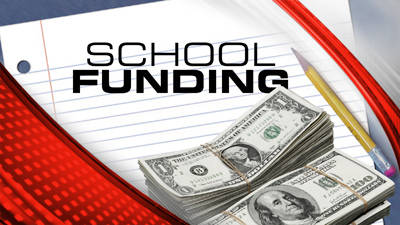
California has the eighth largest economy in the world and well over 37 million residents (Legislative Analyst’s Office, 2007). The state relies on taxes to fund public services that it provides to its individuals and businesses. The state and local governments raise over $200 billion annually of which 60 percent of this comes from taxes (Legislative Analyst’s Office, 2007). Some taxes from which California gathers revenue are: property, income, sales, excise, and lottery taxes. Sales tax is a levy imposed on the selling of certain goods and services usually at the retail level. Property tax is a levy against the owner of real or personal property for individuals or businesses. Property taxes were the first kind of school taxes, and they still constitute almost the complete local tax revenue for schools. An excise tax is imposed by the government within the primary purpose of helping to regulate or control a specific activity or practice not deemed to be in the public interest. An example would be a tax on tobacco and alcohol. Lottery tax is a levy on those who play the lottery or gaming system of a certain state. Income tax is a levy on the overall income of an individual or family.
Although there is not a perfect tax system where individuals can agree on fairness and equity, most public finance authorities agree on certain basic principles and theories of taxation for a viable tax system at any level of government: equity or fairness, adequacy, low costs of collection, impact/incidence, neutrality, and predictability, and neutrality (Brimley et al., 2016). Equity and Ability to pay refers to whether a tax system is fair on how it treats ALL individuals (rich or poor). Adequacy of yield refers to the importance of taxes being applied to productive sources to maintain the extensive services of government. Cost of collection refers to the need for low collection and administrative costs for the government and the individual. Predictability refers to whether a tax is consistent or dependable. This assurance allows governments to forecast future income and expenditures with some accuracy. Finally, neutrality focuses on regulating higher taxes to avoid interference with consumerism which affects the economy.
Financing Education
| Adequacy of Yield | Equity and Ability-to-Pay | Costs of Collection | Impact and Incidence | Predictability | |
| Property
Taxes |
Yes | No | Yes | Yes | No |
| Personal Income Taxes | Yes | Yes | Yes | Yes | No |
| Sales Taxes | Yes | No | No | Yes | No |
| Excise Taxes | Yes | No | Yes | Yes | No |
| Lottery | No | No | No | Yes | No |
The table above lists five characteristics of a viable tax system along with five types of taxes. The tax is analyzed based on the characteristics with a “yes” or “no”.
Based on the analysis, the best tax for education is personal income tax. This tax produces a substantial yield and has a predictability if the economy is good. When the economy is good, established incomes allow governments to forecast future incomes and expenditures with accuracy. The lottery tax ranked the lowest in my analysis. This is because it has a low yield., high cost of collection, and lacks predictability. The lack of predictability is based on the state of the economy and the dependency of players to support the revenue.
References
Brimley, V., Verstegen, D. A., & Garfield, R. R. (2016). Financing education in a climate of change. Boston: Pearson.
Legislative Analyst’s Office (2007). California’s tax system: A primer. Retrieved from https://lao.ca.gov/2007/tax_primer/tax_primer_040907.aspx